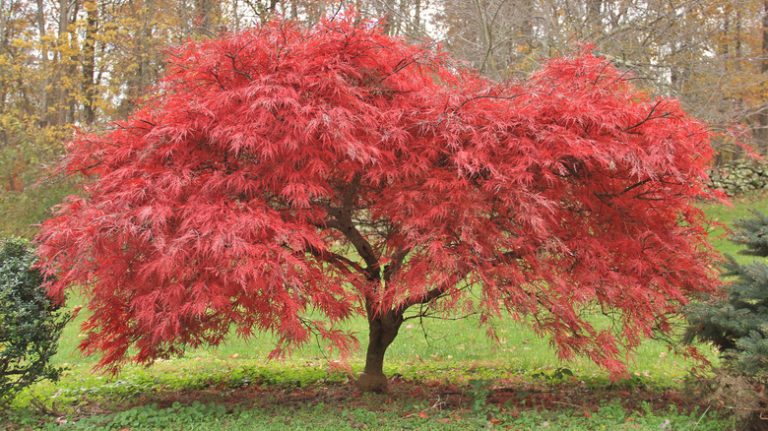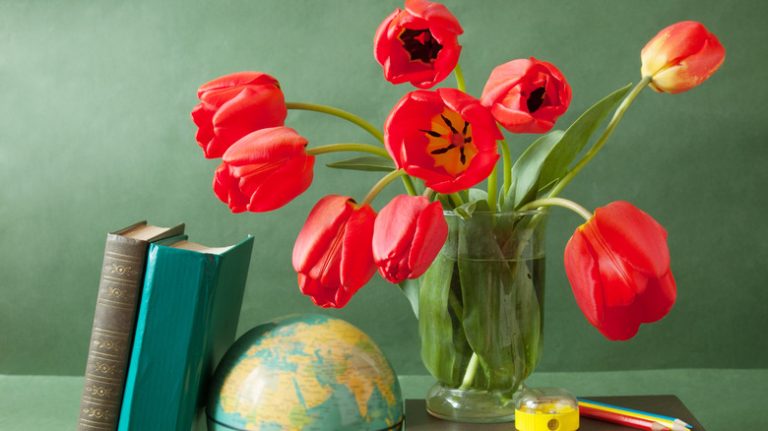Welcome to The Farmer’s Garden Blog! In this blog, we will explore the wonderful world of bluebells, specifically the hyacinthoides hispanica species. These beautiful and vibrant flowers are a sight to behold, and they can easily be grown in your own garden.
With their bell-shaped blooms and deep blue color, hyacinthoides hispanica, also known as Spanish bluebells, are a popular choice among gardeners. They are bulbous plants that can grow up to 24 inches in height, with sturdy stems and leaves that add structure to any garden.
If you are interested in growing bluebells in your own garden, it’s important to know how to care for them. Bluebells thrive in woodland settings and prefer partial shade, although they can tolerate some sunlight. They can be planted in the fall or early spring, and they will bloom from April to June. To ensure healthier and more abundant blooms, it is recommended to plant bluebells in well-drained soil and provide them with regular watering and fertilization.
In this blog, we will also share tips and tricks for creating a successful bluebell garden. From planting techniques to pest control, we will cover it all. So stay tuned for more articles and don’t hesitate to contact us if you have any questions or suggestions.
Join us as we embark on this journey to explore the beauty and delights of the hyacinthoides hispanica species. Let’s dive into the magical world of bluebells and uncover the secrets of growing these enchanting flowers in your own backyard.
Hyacinthoides hispanica
The Hyacinthoides hispanica, also known as the Spanish bluebell, is a species of bulbous plant that belongs to the Hyacinthaceae family. It is native to the woodlands of Spain and Portugal, and is widely cultivated in gardens due to its beautiful flowers.
The Hyacinthoides hispanica blooms in the spring, usually around February. The flowers are bell-shaped and range in color from deep blue to pale blue, creating a wonderful display of color in the garden. Each flower stalk can grow up to 12 inches tall and bears several buds that open up into blooms.
This species of Hyacinthoides is known for its ability to naturalize easily in gardens, spreading through self-seeding. The leaves are long and narrow, similar to those of the hyacinth, and the stems are woody in nature. The Hyacinthoides hispanica can be planted in both full sunlight and shady areas, making it a versatile choice for any garden.
Growing and Care
To grow the Hyacinthoides hispanica, plant the bulbs in the fall, about 2-3 inches deep in well-draining soil. They prefer woodland-like conditions with partial shade and moist soil. Once planted, the bulbs will start producing leaves in the fall, which will remain green through the winter. In the following spring, the flowers will bloom, adding beauty to your garden.
These plants are relatively low-maintenance and require minimal care. They are resistant to most pests and diseases, making them a healthier choice for your garden. The Hyacinthoides hispanica can also be grown in containers, allowing you to enjoy its blooms even if you don’t have a garden.
Contact and Disclaimer
For more information about the Hyacinthoides hispanica or any other plants mentioned in this blog, please contact Farmer’s Garden Blog. This article is copyright © 2024 Farmer’s Garden Blog. All rights reserved. This article may not be reproduced without prior written permission from Farmer’s Garden Blog.
The Farmer’s Garden Blog
Welcome to The Farmer’s Garden Blog! In this blog, we will explore the wonders of the farmer’s garden, where sunlight and care come together to produce delicious food and vibrant colors.
One of the most beautiful sights in the farmer’s garden is the bluebells. These bluebell flowers can be found growing in the woodland, planted by the farmer. The bluebell flowers add a wonderful pop of color to the garden, with their blue hues shining through the leaves.
The bluebell flowers belong to the species Hyacinthoides hispanica, also known as Spanish hyacinths. In February 403, Cynthia Druckenbrod left an error in the planting, which resulted in some bluebells blooming with bluebell flowers on shorter stems and woody leaves easily seen of the gardens.
The bluebells bloom with beautiful buds that gradually open into full flowers. These blooms bring life and fragrance to the farmer’s garden, attracting bees and other pollinators. The farmer takes great care in nurturing these bluebell flowers, ensuring that they grow healthy and strong.
Homegrown bluebells are a treat for the senses, their vibrant colors and delicate fragrance adding charm to any garden. These bulbous plants are a symbol of English gardens and have become a beloved sight in public parks and gardens all over the country.
In conclusion, the farmer’s garden is truly a delightful place to be. With the enchanting bluebells and the delicious food it produces, the farmer’s garden is a testament to the beauty and bounty of nature. Stay tuned for more updates and gardening tips in The Farmer’s Garden Blog!
403 ERROR
Have you ever wondered how to grow your own food? Not only does it give you a sense of accomplishment, but it also ensures that the food you consume is healthier, as you have full control over the care and nourishment it receives.
One popular choice for homegrown gardens is the Hyacinthoides. Also known as bluebells or Cynthia, these lovely flowers bloom in shades of blue and purple, adding a splash of color to your garden.
The Hyacinthoides Hispanica, a species of the Hyacinthoides family, is a bulbous plant that grows up to 12 inches in height. It features tall stalks with clusters of bluebell-shaped blooms at the top, making it a wonderful addition to any garden.
If you have planted Hyacinthoides Hispanica bulbs but have encountered a “403 ERROR,” don’t worry- this error has nothing to do with your gardening skills! It simply means that you have stumbled upon a restricted page. However, you can easily navigate through the Farmer’s Garden Blog to find resources on how to grow and care for these beautiful flowers.
Hyacinthoides prosper in woodland gardens, where they can receive partial sunlight. Their woody leaves and stalks are left untouched until their exquisite bluebells start to appear in late February and continue to bloom into April. These bluebells attract bees and other pollinators, adding life and activity to your garden.
If you would like to plant Hyacinthoides Hispanica in your garden, make sure to contact Druckenbrod, the resident horticulturist at Farmer’s Garden. They will be happy to assist you with any questions or concerns you may have.
So, don’t let a 403 ERROR stop you from enjoying the beauty of these blooming bluebells. Keep growing your own homegrown hyacinths and make your garden a public spectacle!
Growing Bluebells Care Of Wood Hyacinth Bluebells
Bluebells, also known as Wood Hyacinth or Spanish Bluebell (Hyacinthoides hispanica), are a lovely addition to any garden. These woody stemmed plants are native to woodlands and have beautiful blue flowers that bloom in the spring. They can easily be grown in gardens and require minimal care. In this blog post, we will explore how to grow and care for bluebells.
Planting Bluebells
Bluebells are typically planted in the fall, between September and November. They prefer well-draining soil that is rich in organic matter. Plant the bulbs at a depth of about 2 inches and space them about 4-6 inches apart. Bluebells can be planted in both full sun and partial shade, but they do best in woodland gardens where they can receive dappled sunlight.
Care of Bluebells
Bluebells are relatively low maintenance once planted. Water the bulbs thoroughly after planting and keep the soil moist but not waterlogged. The leaves of bluebells will die back after flowering, so it’s important not to remove them as they provide nutrients to the bulb for the next year’s growth. Avoid fertilizing the bulbs to prevent excessive leaf growth and to encourage the formation of flower buds.
Bluebell Flowers
Bluebell flowers bloom in the spring, typically in April or May. They have a wonderful blue color and grow in clusters on stalks that can reach up to 18 inches in height. The flowers of the bluebell plant have a bell-like shape, hence the name. They attract bees and butterflies to the garden and make a beautiful addition to flower beds or borders.
Healthier Bluebells
To ensure healthier bluebells, avoid overcrowding the bulbs. After a few years, bluebells might need to be divided and replanted to maintain their vigor. This can be done in late summer when the foliage has died back. Dig up the bulbs, separate them, and replant them at the appropriate depth and spacing.
In Conclusion
Growing bluebells in your garden can add a splash of color and beauty to your homegrown oasis. With minimal care and the right conditions, these woodland flowers will thrive and bring joy to both you and visitors to your garden. Give bluebells a try and enjoy their stunning blooms!
If you have any questions or need further information, please don’t hesitate to contact us.
This article was originally published on The Farmer’s Garden Blog on February 15, 2024.
English and Spanish Bluebells
The Farmer’s Garden Blog explores the world of hyacinths and bluebells in all their beautiful variety. Among the most popular species are the English bluebells (Hyacinthoides non-scripta) and the Spanish bluebells (Hyacinthoides hispanica).
- Growing Bluebells: Both English and Spanish bluebells have long stems, referred to as stalks, which give them their characteristic shape. Bluebells are bulbous plants that are easy to grow and maintain in the garden. They are woodland plants that prefer shaded areas with dappled sunlight.
- Leaves and Blooms: English bluebells have narrow leaves that are a beautiful shade of green. Their delicate bell-shaped flowers bloom in shades of blue, giving the garden a wonderful burst of color. Spanish bluebells, on the other hand, have broader leaves and larger blooms that come in a range of colors, including blue, pink, and white.
- Healthier Bluebells: When planting bluebells, it’s essential to ensure that you are using the correct species. English bluebells are native to the UK, while Spanish bluebells are from the Iberian Peninsula. Mixing the two species can lead to hybridization and the spread of invasive plants. By planting native species, you can help preserve the biodiversity of your garden.
- Flowering Season and Fruit: Both English and Spanish bluebells produce their blooms from late April to May. The flowers develop from buds and bloom on tall stems, attracting pollinators such as bees and butterflies. After flowering, the plants produce capsules containing seeds, which can be collected to propagate new bluebell plants.
For more information on bluebells or other garden topics, make sure to visit The Farmer’s Garden Blog. Stay tuned for more updates on how to grow and care for these beautiful and versatile flowers!
Source: Farmer’s Garden Blog © 2024 Cynthia Druckenbrod | All rights reserved.



